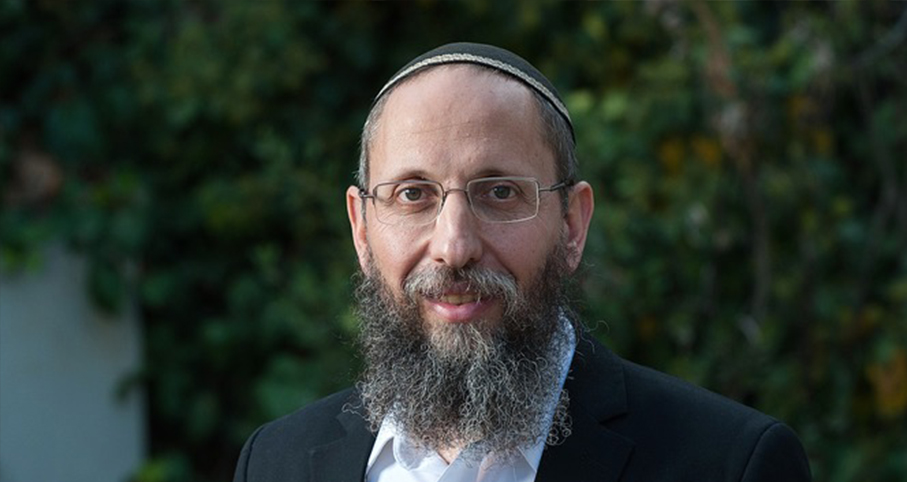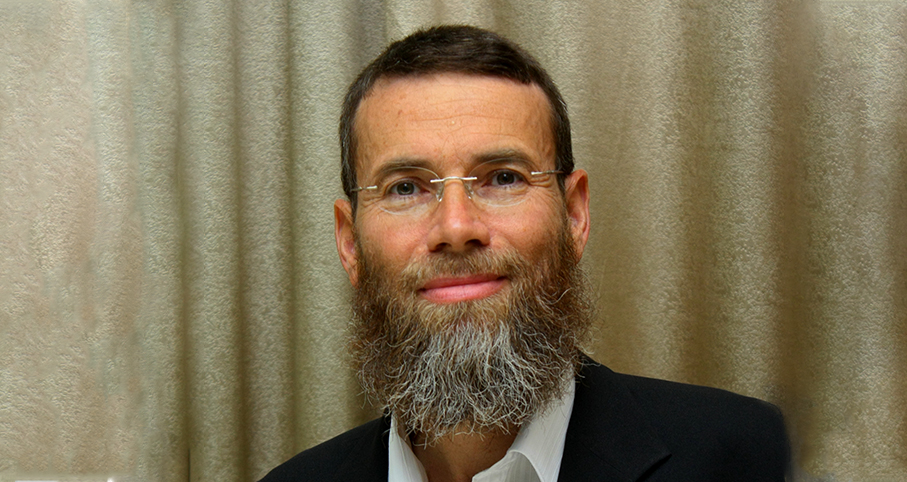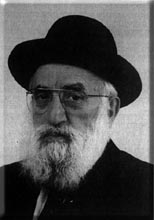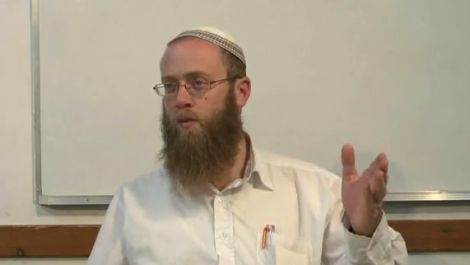Beit Midrash
- Library-Sifria
- Pninei Halacha
- Prayer
When ten Jews are engaged in Torah or prayer, the Shechinah dwells among them, as it says (Psalms 82:1), "God is present in a Godly congregation." Although the Shechinah dwells even with one Jew who prays or learns individually, nevertheless, different levels exist. The highest level is when ten Jews are engaged in a matter of sanctity (davar shebikedushah), for then holiness is revealed to the world (see Berachot 6a). Based on this, the Chachamim established that all matters of sanctity be recited in a minyan. These include: Chazarat HaShatz (the repetition of the Amidah), Birkat Kohanim (the priestly blessing), Barchu, Kaddish, and the Torah reading (Megillah 23b).1
The Chachamim state that a prayer recited together with the congregation (b’tzibur) is accepted, as is written (Psalms 55:19), "He redeems me unharmed from the battle against me, for those with me are many." Even when a congregation prays without full kavanah, HaKadosh Baruch Hu does not turn away from the prayers of the many (Berachot 8a). Although any prayer recited amongst ten Jews is more meaningful and accepted, the essence of communal prayer is ten Jews jointly praying the Shemoneh Esrei, also known as the Amidah.
Hence, praying in a minyan provides two benefits: first, in a minyan one may recite all those matters of sanctity that the Chachamim instituted; second, communal prayer is accepted on the merit of the congregation.
Since the Shechinah dwells in the midst of a minyan, every person should try to be one of the first ten people to arrive for prayer. If a person cannot be one of the first ten people to arrive for Shacharit, he should try to be one of the first for Minchah or Ma’ariv (Shulchan Aruch, 90:14; Ben Ish Chai, Miketz 1).
2. The Virtue of Prayer in a Minyan
Upon first glance, one might think that prayer recited individually is more intense and passionate and better expresses one’s particular character and needs. However, despite the importance of the individual experience, our main objective in this world is to sanctify God’s Name and to connect all the components of the world to their spiritual root. That is why we need to work from within and on behalf of the collective whole. This sense of unity and belonging is also expressed by praying in a minyan. Similarly, in the wording of the Shemoneh Esrei, we make requests on behalf of everyone: "Heal us and we will be healed," "Bless this year for us," "Sound a great shofar for our freedom and raise a banner to gather our exiles," "And to Jerusalem Your city, may You return in mercy," and so too for the remaining berachot of the Amidah.
Am Yisrael’s uniqueness lies in its ability to reveal kedushah (holiness) within the collective whole. Prominent righteous people exist among the gentile nations, but their holiness is limited to their individual lives. Kedushah in a national format is revealed solely through Am Yisrael. Therefore Am Yisrael received the Torah, and it is the nation that can build the Temple, through which the Divine light is revealed to this world. Even ten Jews who gather together for matters of sanctity manifest, to a certain extent, the holiness of the Jewish people.
Therefore, if a person who prays in a minyan, connects to the congregation, identifies with its grief and pleads for its well-being, and wants to add personal prayers from his heart, it is indeed praiseworthy, since all of his personal prayers are connected to the collective whole.
3. What Is Prayer in a Minyan?
The essence of prayer in a minyan is praying Shemoneh Esrei together with ten Jews. One who does not succeed in praying Shemoneh Esrei together with the congregation should pray with the chazan when he repeats the Amidah (Chazarat HaShatz) since, according to most poskim, that is also regarded as prayer recited in a minyan. 2
Additionally, if a person arrives late to synagogue and recites the Amidah while the congregation is still reciting other parts of the prayer service, such as Aleinu Leshabe’ach, although he is not considered praying in a minyan, he does derive some merit, since he is praying in a holy place where ten Jews are singing songs of praise. If he recites the Amidah of Shacharit while the congregation is praying Musaf, he is considered to be praying in a minyan (Tzelach, Berachot 6a; Mishnah Berurah 90:30).
A person who is unable to attend synagogue should try to coordinate the time he prays with the time the congregation prays, thereby partially engaging himself in the minyan’s prayer. This way, his prayer will be accepted, since the time the congregation prays is a favorable time (Berachot 8a; Shulchan Aruch 90:9). Lechatchilah, he should try to synchronize his prayer with the prayers of a specific congregation whose schedule he knows. If he does not know when a particular congregation is praying, he should have in mind to pray with any minyan, for surely any time he prays there is a minyan somewhere in the world that is standing in prayer.3
1 Megillah 23b and Masechet Sofrim 10:7 list the sections of prayer that necessitate a minyan for their recital. The source for this is the verse, "I will be sanctified among the Israelites," meaning that holiness is revealed within a sect of Israel. The Chachamim teach that the Torah is referring to ten Jews. The laws of kiddush Hashem (the sanctification of God’s Name) are learned from here, specifically concerning a person who is forced to desecrate Hashem’s Name by sinning in public. If there are ten Jews present, he must refuse and sacrifice himself, but if ten Jews are not present, self-sacrifice is unnecessary. However, the Ran, as well as other Rishonim and Acharonim, write that the enactment of a minyan for matters of sanctity is a rabbinic ruling, for the obligation itself to recite these sections of prayer is rabbinic. Therefore, when there are doubts concerning rulings of prayer in a minyan, the halachah goes according to those poskim who are lenient, in keeping with the rule, sefeika d’rabbanan l’kula (when there is uncertainty regarding rabbinic rulings, we are lenient).
The Mabit in Beit Elokim, Sha’ar HaYesodot, chapter 39, explains that from the time of Moshe Rabbeinu until the destruction of the Temple, wherever sacrifices were brought the Shechinah was revealed and there was prophecy among Israel; therefore, even the prayer of an individual was heard. After the destruction of the First Temple and sacrifices were no longer brought, Anshei Knesset HaGedolah instituted praying in a minyan so that the Shechinah would dwell among them, thereby facilitating the acceptance of their prayers.
2 Eshel Avraham Butshatsh 52 maintains that prayer with the chazan as he repeats Shemoneh Esrei is considered prayer in a minyan and that is also the opinion of the Chatam Sofer. So write Kaf HaChaim 90:63 and Yabia Omer, part 2, 7, as well as the majority of poskim. By contrast, the Pri Megadim (Eshel Avraham 52:1 and 109:4) writes that the essence of prayer in a minyan is that ten Jews pray the silent Shemoneh Esrei together (this can be inferred from the Rama 109:2 as well). So writes the Igrot Moshe Orach Chaim, part 3, 9, and is implied from the Mishnah Berurah 90:28 and 52:6, as well. However, Beit Baruch 19:35 attests to the fact that the Chafetz Chaim himself would pray with the chazan so that the chazan would not wait for him to finish his prayer. In conclusion, it is best to try to pray silently with the congregation in order to fulfill one’s obligation according to all opinions, but even praying with the chazan is considered prayer in a minyan according to the majority of poskim.
Further, it is implied from the Mishnah Berurah 66:35 that the essence of prayer in a minyan is that one begins to recite the Amidah together with the congregation. However, most poskim write that even if a person is a few berachot ahead or behind, he is still considered to be praying in a minyan, as written in Yabia Omer, part 2, 7, based on the Pri Chadash and others. The Acharonim also disagree concerning whether or not the prayer of six people praying together with four who already prayed is considered prayer in a minyan. Yechaveh Da’at 5:7 considers it to be prayer in a minyan, whereas, Igrot Moshe, Orach Chaim, part 1, 28, writes that it is not considered prayer in a minyan, yet they are permitted to recite matters of sanctity. In conclusion, there are different levels regarding the status of prayer in a minyan.
3 Halichot Shlomo 5:18 writes that the virtue of coordinating his prayer to the time when the congregation is praying applies specifically when the individual praying intends to join a particular congregation. Therefore Rabbi Yitzchak suggested to Rav Nachman that he be notified when exactly the congregation was to begin Shemoneh Esrei, so that he could have in mind to coordinate his prayer with theirs (Berachot 8a). However, the Mishnah Berurah 89:33 writes in the name of the Chayei Adam that a person praying individually may pray immediately when the day begins, for surely in big communities there are minyanim at that time and if so, he will certainly be praying when a congregation is praying. It seems that when a person cannot be physically present with the congregation, there are different levels. The highest level is when an individual has in mind to coordinate his prayers with the prayers of the minyan in which he prays daily. The level below that is when a person coordinates his prayer with a different congregation in the area where he lives. An even lower level is when he synchronizes his prayer with a congregation praying in a different place. The lowest level is when he has in mind to coordinate his prayer with any minyan that is praying at that moment, for probably anytime he prays, there is a minyan praying then. See Avodah Zarah 4b and Rabbeinu Tam’s explanation in the Tosafot.
From the library of Yeshivat Har Bracha























